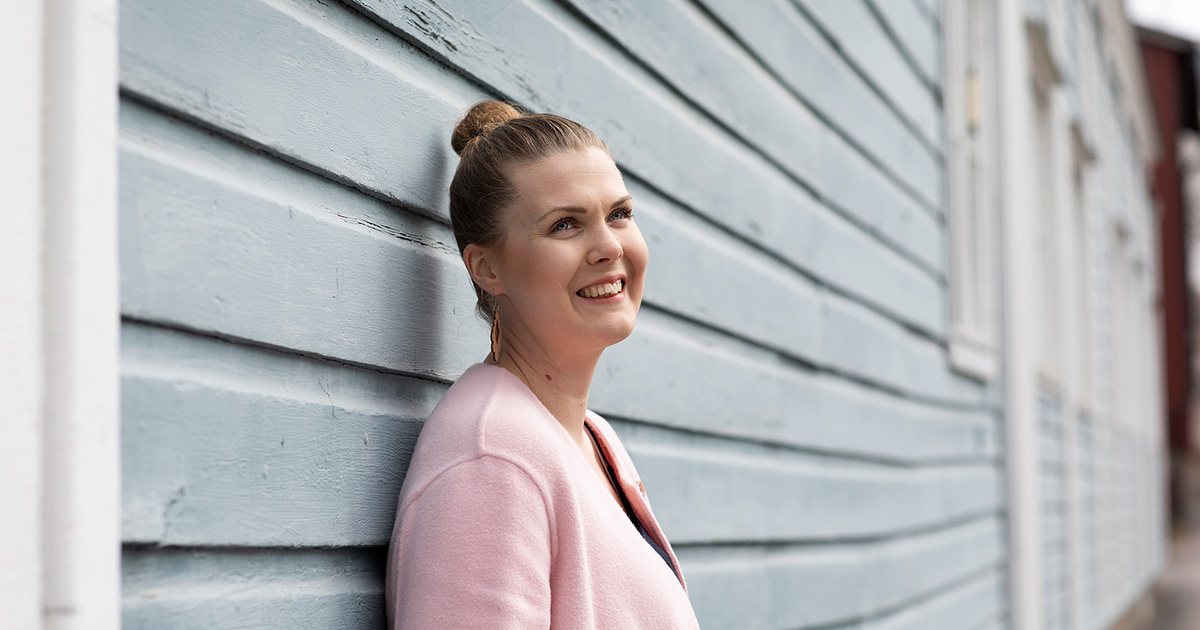An energy system of the future is built in partnership
“It is important that different industries come together. What is waste to one may be a useful resource to another,” believes Helen’s Business Development Manager Kristiina Siilin.

Storage of electricity and hydrogen will be part of the energy systems of the future when the use of renewable energy increases even further. In the circular economy of a future city, one person’s waste may be a resource for someone else.
This is what Helen’s Business Development Manager Kristiina Siilin believes. She is one of eight forerunners and changemakers aged under 35 in her own field of expertise, and the Finnish Flow programme has selected her to represent Finland at the World Economic Forum in Davos this May. With her work, Siilin wants to contribute to clean energy in the cities of the future.
Siilin joined Helen when she was writing her dissertation on electricity storage facilities. She has now worked for six years in various energy storage-related tasks. Today, she is developing services and solutions that support Finland’s transition towards renewable energy production. In this transition, flexibility in the energy system and energy storage play a big part.
“Our entire energy system needs flexibility in order to introduce renewable energy with variable production, such as wind power. Electricity storage is one tool to increase this flexibility,” Siilin explains.
Hydrogen brings possibilities for long-term storage
There is a lot going on around hydrogen right now. Renewable electricity is needed for the production of green, i.e. emission-free hydrogen. Therefore, Siilin believes that the production of renewable electricity will grow significantly in Finland in the next few years.
“In the longer term, in about 5–10 years’ time, hydrogen can bring opportunities for long-term storage of electricity or energy.”
Waste flows are utilised
Circular economy is already being promoted in urban energy systems in many different ways. The aim from here on is to avoid producing any waste and to utilise various materials and waste flows within the process. Hydrogen economy is the next step for various operators to be able to utilise each others’ waste flows.
“The cities of the future will be platforms that enable sustainable living and mobility for the residents. The district heating network in Helsinki is already this kind of a platform for utilising new technologies. When hydrogen is produced with renewable electricity, it creates waste heat that can be recovered and used in the district heating network and recycled for the use of the local residents.”
New kinds of partnerships are important
New kinds of partnerships are needed in the building of energy systems of the future in order to be able to discover all the opportunities of a circular economy and create profitable business operations.
“It is important that different industries come together and learn to identify that what is waste for one may be a useful resource to another.”
Helen is currently building a bioenergy heating plant combined with Cleantech Hub in Vuosaari in Helsinki. The objective is to utilise all produced waste flows as efficiently as possible between different operators. For example, combining the carbon dioxide of a bioenergy heating plant with hydrogen makes it possible to produce synthetic fuels, raw materials for the chemical industry, and even food.
“Energy systems of the future can already be built with the current technologies. In this, Helen is a forerunner and a trailblazer together with its partners. That is how new ways of action are created.